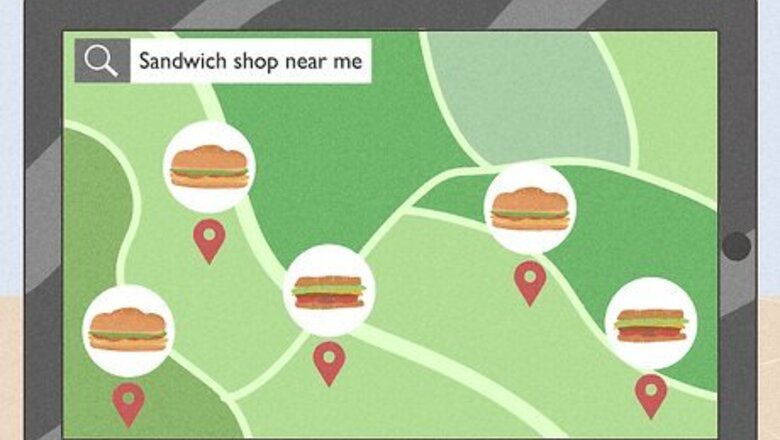
views
Laying the Basic Groundwork
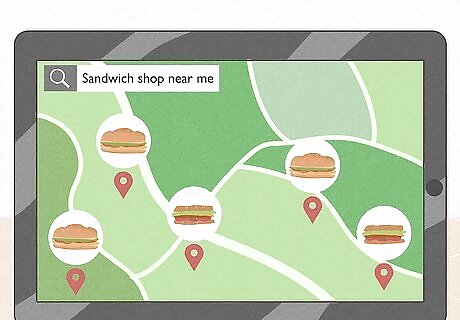
Choose a niche for your sandwich shop. Think about ways you can separate your potential business from other franchises and shops in your community. Check online to see what kinds of shops are already open in your area, as this can help you narrow down your possible niche. Since this business will be your full-time job, try to pick out a niche that you genuinely like. For instance, if there are a lot of sub shops in your area, you might want to focus on selling clubs or diner-style sandwiches.
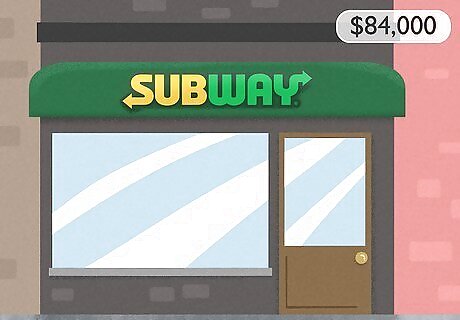
Purchase a franchise shop if you don’t want to start from scratch. Note that some large sandwich chains allow entrepreneurs to purchase individual stores. Buying a store from an established chain helps get rid of some legal bells and whistles, but is still a big investment. Compare the costs of popular franchises to see if this is a realistic option for your business goals. Some franchise stores cost several hundred thousand dollars to own and run, which costs more than starting your own business from scratch. For instance, it costs at least $84,000 to start a Subway store, and over $325,000 to start a Jimmy John’s Gourmet Sandwiches store.
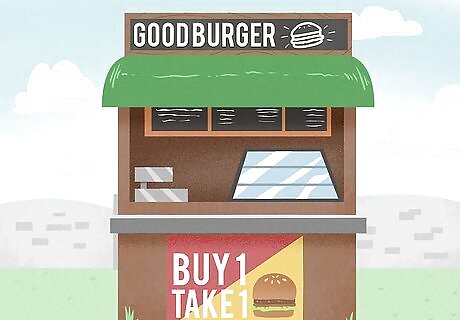
Open an independent sandwich shop if you don’t want to work with a large company. Look through your income over the past few years, including any bills you have to pay, like rent. Keep in mind that you’ll need around $60,000 to get your own sandwich shop up and running, while still having enough money to pay for your regular bills. Think about how much you’re willing to risk to get your shop off the ground, or if you’re comfortable with asking for a large loan. If you’d like to save money, see if you can find any interested friends or family members to join you in starting your own business.
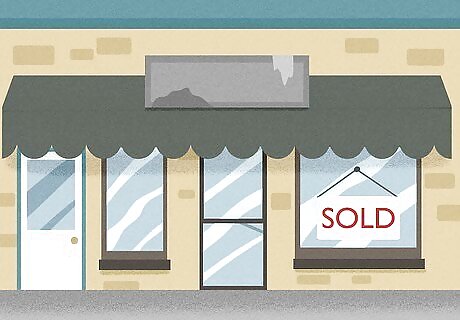
Buy or rent a location for your shop that gets a lot of foot traffic. Search your local area for properties with open leases available, like shopping centers or strip malls. Look specifically for areas that get a lot of exposure and foot traffic, as this will help you make a bigger profit. Ideally, look for vacant spaces that are near train stations, airports, or other busy areas where there will be a lot of people milling around. If you choose a location in the middle of nowhere, you won’t make as much money.

Pick a name for your shop if you aren’t opening a franchise store. Think of something simple but catchy to name your shop, so customers know exactly what to expect. Play around with alliteration, or use a play on words instead. Draft a list of different name ideas until you find one that you really like! For instance, you can name your shop something “Denise’s Deli” or “Fresh Meats, Eats, and Treats.” Once you think of a business name, register or trademark the name so your name is legally protected.
Planning out the Logistics

Write a business plan to flesh out the details of your shop. Take some time to write out the fine print of your business, like a description of your sandwich shop and an analysis of the industry. Draft out the full details of how you plan on running and managing your store, so potential investors can get an idea of what you’re trying to do. Generally, a business plan starts with an executive summary, then includes a company description, market analysis, organizational structure, a section on products and services, a discussion on marketing and sales, funding requests, and an appendix. Double-check your document to make sure there are no errors. Your funding request needs to include everything you’ll need to keep your shop up and running. This includes items like industrial appliances, cabinets, uniforms, paper supplies, cups, food prep tools, bread, meats, toppings, employee wages, and more.

Visit your local bank and ask for a loan, if necessary. Schedule an appointment or send a letter to the bank so you can ask for an official business loan. Bring your business plan, along with your expected financial projections and a sheet listing your expected costs. Explain your plans for the sandwich shop in detail so the banker gets a feel for your proposition. Don’t be disappointed if the bank rejects your offer. You can always reach out to independent investors, or use a crowd-funding website to raise money for your shop!
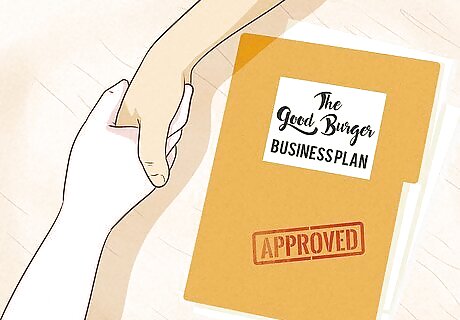
Establish your shop as a legal business via a registered agent. Reach out to a registered agent, or a person who can get all the necessary legal documents together for your application. While you don’t have to use a registered agent for this part of the process, doing so can save you a lot of time and stress down the line. Before you submit your request, decide if you want to be an LLC, corporation, or limited partnership. An LLC is probably the best option for a small business, like a sandwich shop you’re opening up on your own. If you’re opening your shop with someone else, consider registering as a limited partnership instead. If you’re registering as an LLC, you’ll need to submit different articles of organization as well as an LLC operating agreement. If you’re registering as a limited partnership, you’ll need an official certificate and a written agreement.
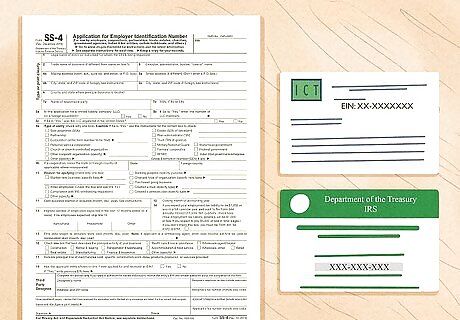
Register your business so you can pay the proper taxes. Use a government website to apply for an Employer Identification Number (EIN), which enables you to pay taxes and get the proper licensing you need to operate your shop. You’ll need to get both a federal and state tax ID number, so you can meet all necessary legal obligations. Double-check your region’s websites to see what type of tax ID numbers you need. Different countries have different policies for starting new businesses. For further support, visit your country or region’s website to get more information.
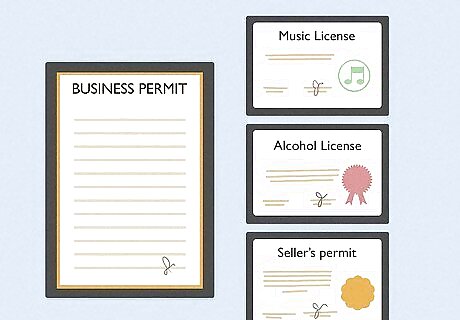
Obtain the necessary licenses and permits for your area. Check your government’s website to see what kinds of licenses and permits you need for your area. Depending on the region, you may need to get a specific type of license in addition to a regular business license. Additionally, look up your state or region’s requirements to see if you need any localized permits or licenses. You can’t get a business bank account without having a business license. Your state or local region will likely have more specific permits and licenses that you’ll need to apply for. For instance, you’ll need to get a Temporary Seller’s Permit, which will eventually become a Seller’s Permit for the state or region you’re in. For instance, if you plan on selling beer or wine coolers at your sandwich shop, you’ll need a separate alcohol license. If you plan on playing music in your shop, you’ll need a music license. Some government websites will help walk you through the process of which specific licenses you’ll need.
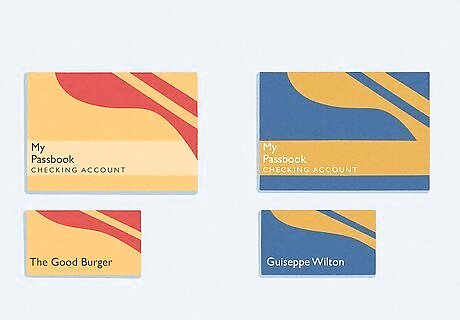
Create a separate bank and charging account for your shop. Look into different banks after you receive your official EIN. Search for banks offering discount rates and low fees, along with decent interest rates. Some banks may have special offers or promotions for new clients, so you might get extra benefits. Bring your EIN, business license, formation documents, and any ownership agreements with you to set up the account officially. A separate bank account protects you from paying for business expenses out of your own pocket.
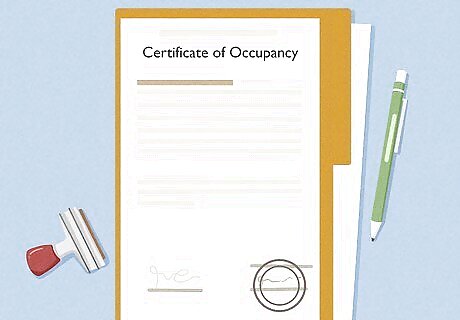
Obtain a Certificate of Occupancy (CO) for your shop. Talk to your landlord if you’re leasing a space for your sandwich shop. Since the landlord owns the actual property, they’ll give you the CO to prove that you’re setting up your business there. If you own the building that your sandwich shop is in, speak with members of your local government to get your CO. Your store will need to be up-to-code before you can get the certificate. You have to pay a fee to get your CO, which can cost several hundred dollars. In some areas, you’ll also have to pay an extra fee to comply with certain building codes.

Get a business insurance policy to protect your shop. Compare different types of business insurance and think about which kind you’ll need the most. General liability insurance can protect you from more general issues, like lawsuits and injury, while commercial property insurance will cover your sandwich shop from damages like fire or flooding. Reach out to a commercial insurance agent when you’re ready to commit to a policy. Once your sandwich shop gets off the ground, you may want to re-examine your policies over the next few years.
Choosing a Menu

Offer some classic sandwiches that fit your niche. Think about sandwiches that a lot of people enjoy that fit within the theme of your sandwich shop. Brainstorm options that will appeal to a wide variety of customers, like a tuna sub or a cold cut sandwich. For instance, if you offer halal foods, you can feature different types of falafel sandwiches. If you offer vegan sandwiches, offer food with veggies, tofu, and other naturally-sourced protein. You may want to look at neighboring sandwich shops and see what kinds of food they’re selling. However, note that some larger franchises may have trademarked sandwiches and recipes that you can’t sell or use in your own shop.
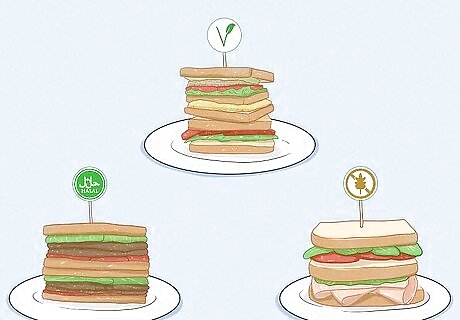
Serve sandwiches that cater to different diets and lifestyles. Envision the different types of customers that will be visiting your shop. While some visitors will enjoy meaty sandwiches, other customers may be vegetarian or vegan or have certain allergies and intolerances. Add veggie-rich options to your menus, along with other foods that cater to a wider variety of diets. For instance, you might want to offer kosher and halal options on your menu, like beef. You may also want to have gluten-free bread on hand.
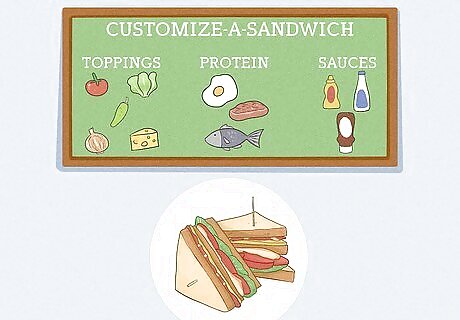
Offer different toppings and sauces so people can customize their sandwiches. Think about some popular toppings that people like to add to their sandwiches, like fresh veggies, cheese, guacamole, and such. Set up a bar or display case where customers can pick and choose different toppings and sauces, which can really personalize the sandwich. For instance, you can offer mayo, vinegar, honey mustard, and barbecue sauce as possible sauces. You can have tomatoes, lettuce, onions, spinach, jalapeño peppers, and other veggies available.
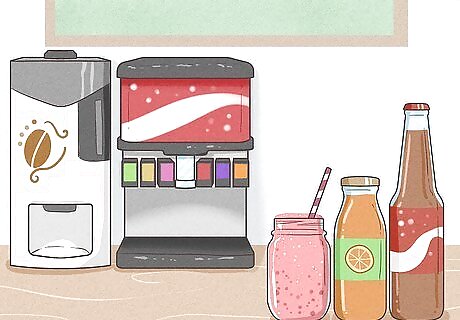
Select popular drinks for customers to choose from. Set up a coffee machine so you can make lots of inexpensive coffee for your visitors. Additionally, set up a soda fountain, or sell individual drink bottles so your customers can stay refreshed while they enjoy their meal. For instance, if you’re trying to open a healthy sandwich shop, you can sell a variety of fruit juices and smoothies. If you’re opening a small, on-the-go sandwich shop, you can offer bottled sodas and water that customers can grab while paying.

Sell side dishes and desserts as an extra touch. Add extra food to the menu to entice your customers. Include foods like potato chips, french fries, or side salads that your customers can dig into. You can also offer different baked goods, like cookies, to appeal to your customers’ sweet tooth. Selling different side dishes and desserts can really help your shop stand apart from the crowd.

List a “special” item each day. Pick a different sandwich to promote each day. Switch between hot and cold sandwiches, or pick something that fits in with the current season. Promote this sandwich to any customers who come in, which may inspire visitors to try new foods at your shop.
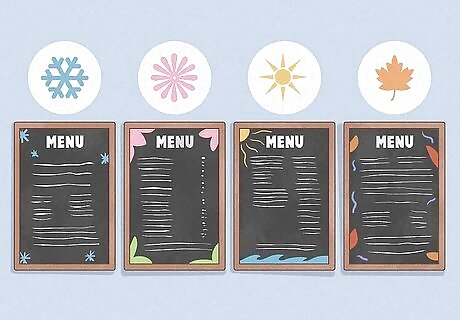
Develop alternate menus to keep things interesting. Don’t sell all your sandwiches at once—instead, write out multiple menus with different options. You can sort your menus by week, season, or any other category you’d like. This way, your customers will have new options each time they walk through the door! For example, you can design a summer menu with light, refreshing sandwiches or a winter menu with hot sandwiches.

Set your base sandwich price at less than $10. Visit other sandwich shops to see how much they charge for each sandwich. Try to keep your prices competitive, while still charging enough to make ends meet. If you’d like, you can set a base price for your sandwiches, then charge extra for certain toppings. For instance, a 6 in (15 cm) sub can be priced around $4 with 3 toppings included. You can then charge extra toppings for $0.50 to $1.00.
Getting the Shop Ready for Business
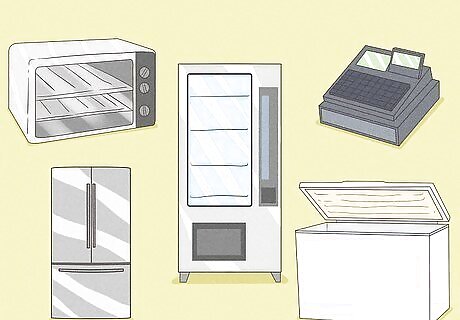
Install all of the necessary equipment in your shop. Write a list of all the equipment you’ll need to successfully operate your sandwich shop, like an oven, toaster, refrigerator, drink machine, cash register, freezer, and more. Take time to purchase or rent all of this equipment and install them in the back of your shop, or wherever you plan on serving and storing your ingredients. Don’t be afraid to ask for help! It can be difficult to install industrial-sized equipment on your own, and it might be easier and safer to ask a professional to help you install your appliances.

Make arrangements with vendors to get timely deliveries. Find wholesale markets and vendors that carry the supplies you need for your sandwiches, like cold cuts, fresh veggies, and ingredients for bread. Create a delivery schedule with these groups so you can get your ingredients and supplies in a timely, effective manner. For example, you can get your food ingredients from a wholesale distributor, along with other food manufacturers. You can also take advantage of local suppliers and markets to give you your ingredients. Look for supply companies that can provide you with napkins, cups, utensils, and other necessary supplies.
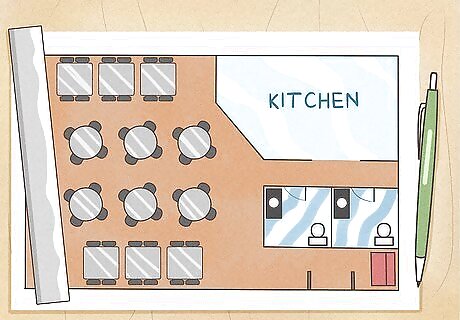
Organize the layout of your shop so you’re ready to serve customers. Sketch out a floor plan so you have a rough idea of how you’d like your sandwich shop to look. Set aside a storage area for your ingredients, along with a prep area. Double-check that the restroom is easily accessible to customers so they can stay as comfortable as possible. For instance, you can dedicate ⅔ of your shop to customer seating, and make the other ⅓ a prep and storage space for your supplies. Check that there’s enough room for you and several employees to move around comfortably between your storage space and the food prep area.

Create a comfortable, decorative environment for your customers. Invest in tables and chairs or booths where your customers can sit and enjoy their sandwiches. Space your seating apart so your visitors don’t feel uncomfortable or overly cramped while they’re visiting your establishment. Additionally, choose lighting decor that fits the theme of your sandwich, and gives your establishment a comfortable vibe. For instance, you can set up bright lights and paint the walls in a warm orange or red tone to provide an enticing environment for your customers. If you’re focused on serving Italian food, decorate your shop with colors from the Italian flag.

Hire employees to help run the shop. Place a job posting to let people know that you have part-time work available. While you can manage the shop on your own, you’ll want employees to help serve the food and keep the business tidy overall. For instance, you can post something like: “Tyrone’s Wraps is looking for part-time help on the weekends. This position requires good people skills, quick thinking, and the ability to lift up to 20 lb (9.1 kg). Any interested parties can visit the store directly or submit an application online.”

Train all employees before the shop opens. Teach any new hires how to prepare ingredients and make sandwiches safely. Double-check that each employee is comfortable and confident in these processes before they serve actual customers. Additionally, keep your employees up-to-date on any important tasks and policies, like sanitizing the bathrooms or dealing with unruly customers. It may help to hire employees who have experience in the service industry.

Establish clean hygiene practices around your shop. Keep track of when your health inspections will occur so your shop remains a clean, healthy environment for customers. Take extra precautions in preparing your food, especially if you’re working with raw ingredients. To prevent the spread of germs, always wear gloves when you make the sandwiches, along with a hairnet. For instance, if you use the same knife to slice your meats and cheeses, you may cause an issue for someone who’s lactose intolerant.
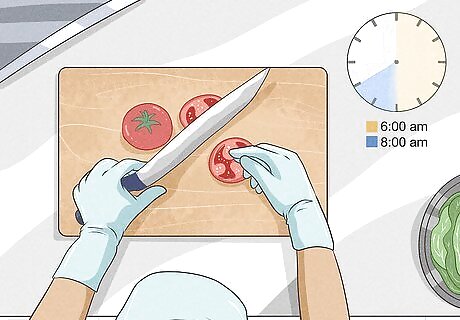
Arrive early each day to get the food and drinks ready. Plan to get to your shop several hours before your shop is actually open for business. You’ll need to prepare the meats and bread and lay out fresh toppings for the upcoming day. Since you’re running your own business, you’ll have to work consistently long hours to keep your shop in tip-top shape. For instance, if you open at 8 AM, you’ll probably want to start prepping at 6 AM.

Clean your establishment on a daily basis. Take time each day to wipe off all the surfaces, mop the floors, and clean any other facilities in your shop, like the bathroom. Do your best to sanitize surfaces frequently to prevent germs from spreading around. You can delegate cleaning tasks to your employees, if needed.
Marketing Your Business

Create a website for your sandwich shop. Make a website with a free service, like Wix, Weebly, Google Sites, or another similar group. List your important contact information, like your address and phone number, along with your current menu. If you offer delivery or online ordering, specify this information on your website. If it’s possible, buy a website domain to match the name of your business. This helps give you a cohesive brand identity.

Register your sandwich shop on social media. Make accounts on Facebook, Twitter, Instagram, and any other platform that you think would help you connect with new customers. Post pictures of your new sandwiches, and list any promotional offers that you have going on. Social media profiles are a great way to connect and speak with current and potential visitors. Link to your website on your social media so customers can see your menu.

Host giveaways to entice new customers. Think of a fun, easy contest that customers can participate in online, like a guessing game or caption contest. Give the winner a nice reward, like a free sandwich. Contests and events can help drum up new business for your sandwich shop. As a requirement for entering the contest, ask participants to follow you on social media.

Develop an advertising plan for your business. Sign up for digital advertising campaigns that promote your shop on social media and online. If you have a little more money to spare, find public spaces where you can rent advertising space to spread the word about your shop. You can use programs like Google AdWords to figure out what your customer base is most interested in. Purchase “sponsored posts” on social media to help promote your business.

Make an email campaign for your customers. Email marketing is still very much a thing! Invite new customers to sign up for an email list, where they get the latest news on what’s happening in your shop. You can use special programs to send emails to large groups of people, though these programs usually come with a monthly fee. For instance, you can try using Campaigner or Constant Contact to spread the word about your shop.
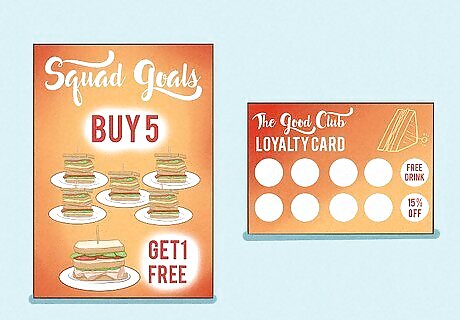
Create a rewards program for new customers. Develop a punch card or some other type of incentive program that inspires customers to come back. This can be something like “buy 5 sandwiches and get 1 free,” or offering discounts if customers refer their friends and family to the store. Experiment with different programs until you find something that really helps drum up business.




















Comments
0 comment